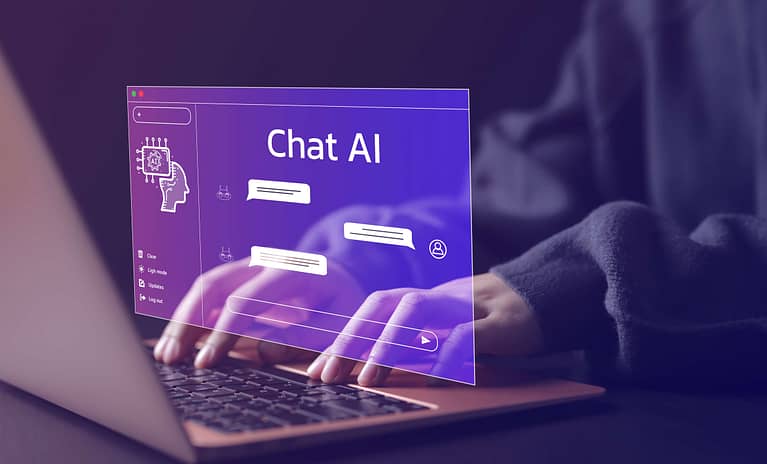Generative AI, like ChatGPT, is revolutionizing how businesses operate by enabling new use cases and applications. A pioneer in building domain-specific generative AI, we have been able to incorporate generative AI into our products and enhance our services for several years.
What has been most successful for enterprises are specific use cases that address a business need or challenge within their particular industry, what we call domain-specific. Domain-specific AI addresses some limitations of larger generative AI models and is more relevant to clients' needs.
Part of the challenge lies in the sprawling nature of large language models or LLMs like GPT and BERT. LLMs are trained on terabytes of data, but the inputs are static and often need more specific training data to provide accurate answers for disparate topics. Further, the user cannot control inputs into large LLMs, which creates challenges for businesses addressing needs within their domain.
That prompted Techcrunch to say of LLMs, "As we are learning with large language models, …capability seems to be as wide as an ocean but as deep as a puddle." This quote encapsulates the problem for businesses. LLMs alone often provide unreliable results that don't resolve use-case challenges that need a more concrete answer than ChatGPT might offer on a query.
To be successful, an LLM requires further fine-tuning to answer prompts in a dependable and actionable manner for clients. By training foundation models like the GPT and BERT algorithms on domain-specific data for high-RoI use cases, Evalueserve ensures better accuracy and relevance for clients. Experts guide the LLM to ensure
Applying Generative to Domain Specific

As generative AI becomes more pervasive, clients will increasingly seek service partners like us to adopt and scale new and existing technologies effectively with domain expertise. With an extensive catalog of AI microservices on our AI for Research and Analytics (AIRA) platform, we empower our product and operations teams with a foundational platform and its comprehensive set of domain-specific reusable components.
We have added generative AI capabilities to models and incorporated those productive tools as microservices into AIRA. With our cumulative AI capabilities, Evalueserve empowers businesses to leverage the power of generative empowered models to achieve tasks such as summary generation, research, reporting chatbots, RFP response generation, and synthetic data generation.
The process of creating domain-specific AI involves the following:
- Identifying a high-RoI use case Building an AI using foundational models like generative AI algorithms GPT and BERT
- Training AI with domain-specific data
- Deploying and integrating through customer microservices, embedded solutions, or Evalueserve products like Insightsfirst
- Fine-tuning for clients using their specific company data
Proven generative AI tools and microservices created from LLM algorithms are added to an AI model – if the use case dictates a need for those tools. Often inclusion in an AI model is function-specific, resolving an execution or need. Some examples of Evalueserve generative AI deployments as part of larger models include:
Summary Generation: Market and competitive intelligence teams use domain-specific summary generation to accelerate their research.
Research Chatbot: Analysts can gather answers directly from a chatbot instead of reading through numerous reports available to Insightsfirst clients.
Reporting Chatbot: Managers can pull any KPI through the reporting chatbot without needing technical skills.
RFP Response Generation: Professional services firm DAI uses Evalueserve's RFP platform to draft answers based on previous proposals.
Synthetic Data Generation: GAN-based synthetic data generation enhances the accuracy of retail solutions like the Intel smart scale.
Generative AI is a powerful tool within the more extensive suite of AI algorithms, tools, and microservices. Using it to achieve business-specific goals only makes sense, as the need dictates.
Demystifying Generative AI

Some may need help understanding the difference between generative AI and other forms of AI. Generative AI is a subfield of AI that had a recent breakthrough moment with the launch of ChatGPT in late 2022.
Previously, AI was limited to analyzing data, and the primary goal was predictive. Predictive models could observe and classify existing datasets. Generative AI takes it one step further. Beyond understanding data, generative AI can produce new data and create original content.
To illustrate this evolution, let's look at text analytics:
- NLU (natural language understanding) classifies and analyzes text to understand the meaning of human language. It infers the intent behind words and phrases within a specific context.
- NLG (natural language generation) generates human-like language. It can summarize text, answer questions, and develop creative content.
Typical outputs of generative AI include text, code, images, audio, videos, and simulations. It can take different types of algorithms to create these outputs. For example, Open AI's GPT algorithm can produce text and code, but its' Dall.E algorithm makes images. Outputs are created when a user or another AI prompts the algorithm to produce an output, similar to querying a search engine for results.
These outputs often appear "creative" and seemingly indistinguishable from human-generated content. One of the most amazing things about generative AI is its ability to produce content better than individuals who are not experts in their field. For example, text generators have been used to write A-level essays; image illustrators are used to create Facebook images faster than social media managers; and code generators have solved bugs faster than skilled programmers.
The output quality depends on the training data and the specific algorithms used. GPT was trained on 45 terabytes of text data and employed 175 billion parameters or coefficients, many of which intentionally retain elements of randomness to make the output appear more lifelike.
Despite the enormous amount of data, GPT-3 models still generate inaccurate and inappropriate content. Image generators still often produce pictures of people with six fingers or portraits with unhuman-like irises. These types of outcomes speak to the need for domain-specific AI and subject matter experts guiding the process. Domain-specific AI models are not deployed unless they can deliver reliable results for businesses.
To learn more about Evalueserve's AI capabilities, visit our AI Lab page.


